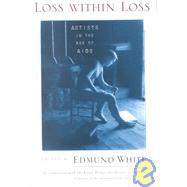| Introduction The American Sublime: Living and Dying as an Artist | 3 | (10) | |||
|
|||||
|
13 | (7) | |||
|
|||||
|
20 | (17) | |||
|
|||||
|
37 | (13) | |||
|
|||||
|
50 | (11) | |||
|
|||||
|
61 | (27) | |||
|
|||||
|
88 | (10) | |||
|
|||||
|
98 | (15) | |||
|
|||||
|
113 | (18) | |||
|
|||||
|
131 | (16) | |||
|
|||||
|
147 | (5) | |||
|
|||||
|
152 | (16) | |||
|
|||||
|
168 | (14) | |||
|
|||||
|
182 | (13) | |||
|
|||||
|
195 | (11) | |||
|
|||||
|
206 | (7) | |||
|
|||||
|
213 | (27) | |||
|
|||||
|
240 | (5) | |||
|
|||||
|
245 | (11) | |||
|
|||||
|
256 | (14) | |||
|
|||||
|
270 | (9) | |||
|
|||||
|
279 | (7) | |||
|
|||||
|
286 | (5) | |||
|
|||||
| Subject Biographies | 291 | (8) | |||
| Contributor Biographies | 299 |








